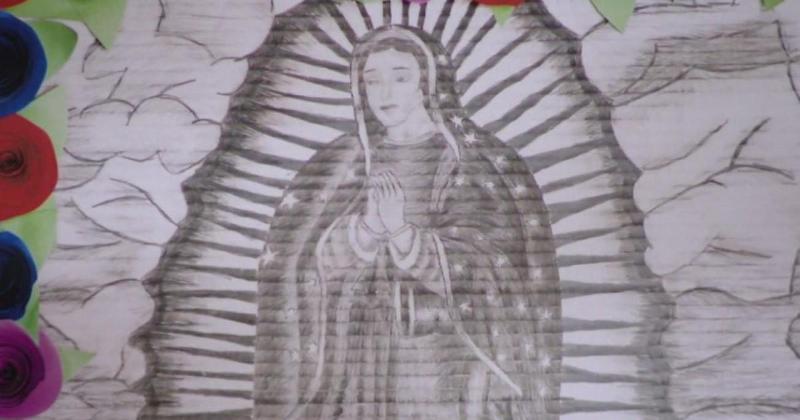When children create art, they unveil their true selves and their dreams for the future. This rings especially true for the hundreds of migrant children who found solace in art while detained in a Texas facility. In the captivating exhibit "Uncaged Art," these young artists express their hope and pride through their resilient works. Let's delve into this powerful display and explore the impact of their art on the Chicago community.
The Power of Art: Revealing the True Selves of Migrant Children
Explore how art becomes a powerful medium for migrant children to express their true selves and dreams for the future.
Art has an incredible ability to transcend language barriers and give voice to emotions that words cannot fully capture. For the migrant children who experienced months of detention in a Texas facility, art became their outlet for self-expression and hope. Through their artwork, these young artists reveal their true selves, their dreams, and their resilience.
By delving into the exhibit "Uncaged Art," we can witness the transformative power of art and understand the profound impact it has on these children's lives. Their artwork serves as a testament to their strength and their unwavering spirit in the face of adversity.
The Birth of "Uncaged Art": From Sadness to Resilience
Learn about the origins of the "Uncaged Art" exhibit and how it emerged from the sadness and resilience of migrant children detained in Texas.
The "Uncaged Art" exhibit was born out of the sadness and resilience experienced by migrant children who were detained in the Tornillo immigrant detention center in El Paso, Texas. These young artists, aged 13 to 17, were separated from their families and confined to a makeshift tent city for nearly a year.
During their time at the detention center, a group of teachers recognized the need for these children to have a positive outlet for their emotions. They encouraged the children to create art, to express their hopes and dreams, and to find solace in their native cultures. The resulting artwork became a symbol of their resilience and a testament to their strength in the face of adversity.
Bringing "Uncaged Art" to Chicago: Amplifying Voices Through Art
Discover how the "Uncaged Art" exhibit is making its way to Chicago, amplifying the voices of migrant children and fostering empathy in the community.
The "Uncaged Art" exhibit is now traveling through various venues in the Chicago area, including churches, schools, and libraries. One of the locations hosting the exhibit is Saint Martin's Episcopal Church in the Austin neighborhood.
The goal of bringing this exhibit to Chicago is to use art as a medium to foster empathy and understanding. By immersing themselves in the artwork, viewers are invited to imagine what it would feel like to be detained and separated from their families solely based on their immigration status. The exhibit aims to create a space for dialogue and reflection, encouraging individuals to work together towards liberation and justice for all.
The Rescued Art: A Testament to Beauty and Resilience
Learn about the incredible rescue of the migrant children's artwork and how it serves as a powerful testament to their beauty and resilience.
When the Tornillo detention center was closed, the children's artwork was at risk of being discarded. However, Father Garcia, a local Roman Catholic priest, discovered this and managed to rescue 29 pieces of art from being lost forever.
These rescued artworks are not only visually stunning but also serve as a testament to the beauty and resilience of these young artists. Each piece tells a unique story, capturing the emotions and experiences of the children during their time in detention. By preserving and showcasing these artworks, we honor their voices and provide a platform for their stories to be heard.
The Liberating Power of Art: Amplifying the Voices of Migrant Children
Discover how art can serve as a powerful tool for liberation, amplifying the voices of migrant children and inspiring collective action.
Art has the incredible ability to communicate messages that words alone cannot convey. Through their artwork, these migrant children are able to tell stories that are often too deep for words. The vibrant colors, intricate details, and powerful symbolism in their art create narratives that resonate with viewers on a profound level.
By engaging with the "Uncaged Art" exhibit, we are invited to listen, see, and truly hear the voices of these young artists. Their art calls us to action, urging us to work together to liberate all individuals who have been unjustly detained and separated from their families. It is through collective action and empathy that we can create a more just and compassionate society.
Conclusion
The "Uncaged Art" exhibit is a powerful testament to the resilience, hope, and beauty of migrant children who have experienced the hardships of detention. Through their artwork, these young artists have found a voice, expressing their dreams and emotions in ways that words alone cannot capture. The exhibit serves as a call to action, urging us to work together to create a more just and compassionate society for all individuals.
FQA :
What is the significance of the "Uncaged Art" exhibit?
The "Uncaged Art" exhibit holds immense significance as it showcases the artwork created by migrant children who were detained in a Texas facility. It amplifies their voices, sheds light on their experiences, and fosters empathy and understanding in the community.
Where can I see the "Uncaged Art" exhibit in Chicago?
The "Uncaged Art" exhibit is currently traveling through various venues in the Chicago area, including churches, schools, and libraries. One of the locations hosting the exhibit is Saint Martin's Episcopal Church in the Austin neighborhood.
How can art be a tool for liberation?
Art has the power to communicate messages and evoke emotions that words alone cannot convey. Through their artwork, the migrant children in the "Uncaged Art" exhibit tell stories, express their hopes, and inspire collective action. Art serves as a powerful tool for liberation by amplifying voices, fostering empathy, and calling for justice.

